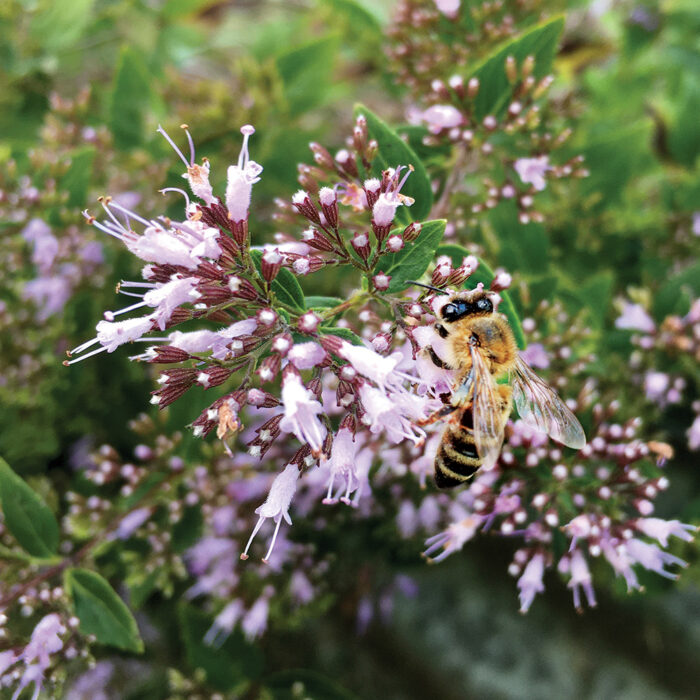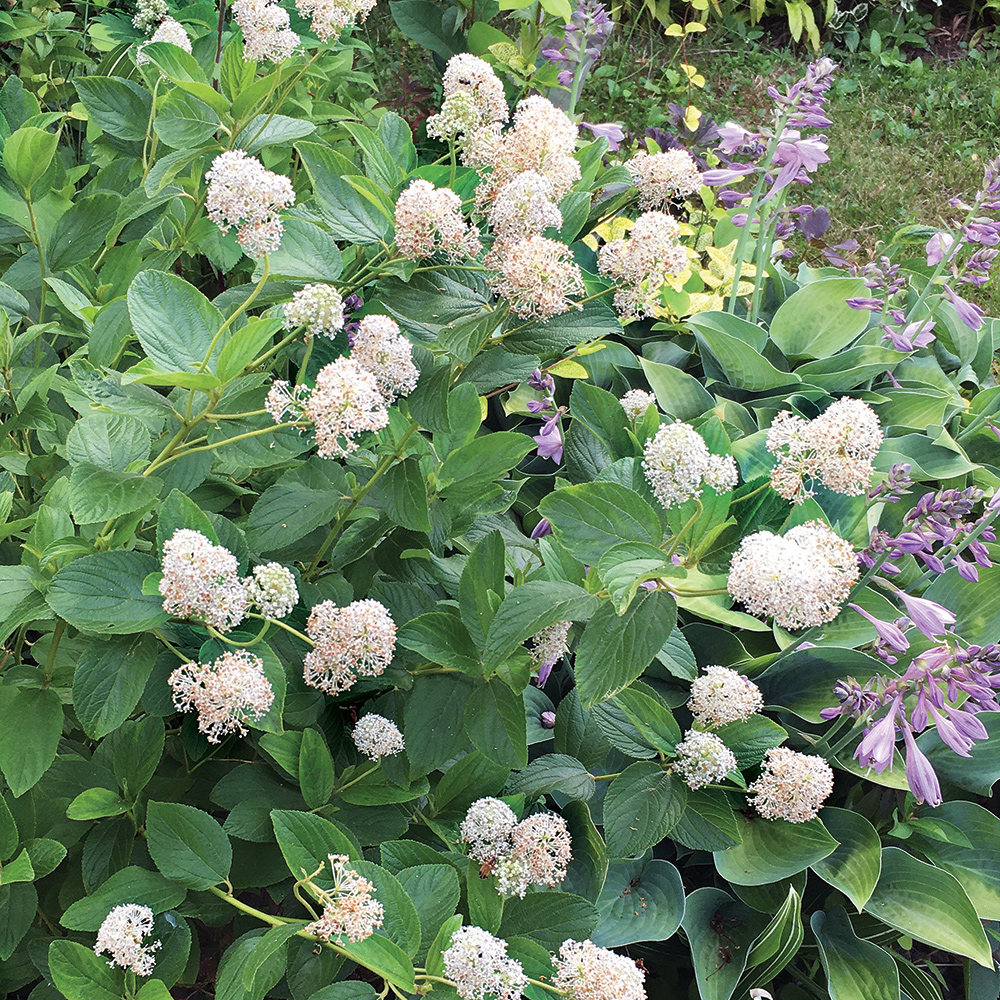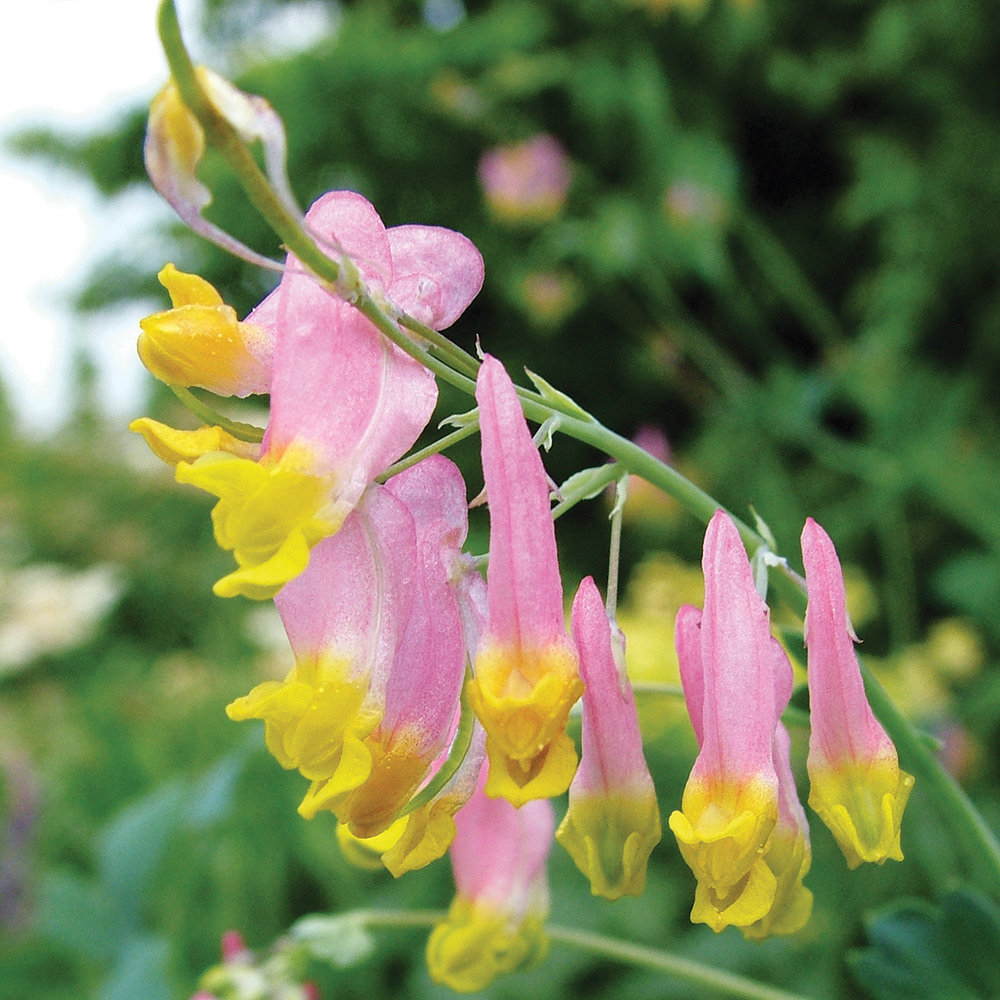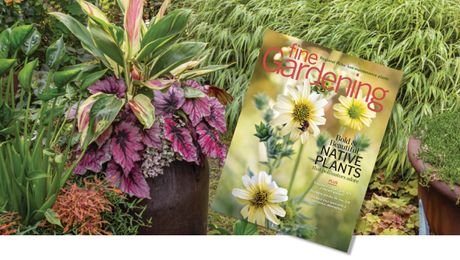
American Dittany
Cunila origanoides
Zones: 5–8
Size: 10 to 18 inches tall and wide
Conditions: Full sun to partial shade; well-drained soil
Native range: Central and eastern United States
American dittany has much to offer, including pollinator-supporting flowers and fragrant, flavorful foliage that’s unappealing to deer and rabbits. It forms loose mounds of dark, slender stems with small, pointed leaves. The bloom season starts in July in the warmest parts of its range and in August elsewhere, with clusters of small, tubular, pinkish-purple flowers that continue into early fall. Watch for bonus “frost flowers”—curled ribbons of ice—emerging from the base of the stems when freezing weather arrives in autumn. Enjoy American dittany as an edging plant or in a container planting so you can brush by the leaves to release their warm, spicy scent.
New Jersey Tea
Ceanothus americanus
Zones: 4–9
Size: 2 to 3 feet tall and 3 to 4 feet wide
Conditions: Full sun to partial shade; well-drained soil
Native range: Eastern North America
This deciduous shrub is charmingly ornamental, with puffs of tiny, white, fragrant flowers that show off perfectly against the rich green foliage. Blooming mostly in early to midsummer, they’re a magnet for many insects, including native bees, flies, and beetles, as well as hummingbirds and butterflies. With its naturally compact, mounded habit, New Jersey tea fits easily into suburban and even urban spaces, including foundation plantings and hellstrips. You can also use it as a low hedge, in masses to fill space or to stabilize a slope, dotted into mixed borders, or as part of a backyard wildlife habitat. This deep-rooted and drought-resistant native is a little slow to get established, but it lives for years with minimal care.
Seashore Mallow
Kosteletzkya virginica syn. K. pentacarpos
Zones: 6–9
Size: 3 to 5 feet tall and 2 to 4 feet wide
Conditions: Full sun; average to wet soil
Native range: Eastern United States
Though it’s native to coastal areas, seashore mallow doesn’t need marshy conditions to thrive; it adapts readily to gardens where the soil is on the moist side. This plant is typically a perennial, but it flowers the first year from seed and quickly reaches shrub-size proportions, making it ideal for adding height to young landscapes. The branching stems carry hibiscus-like, bright pink blooms that attract the attention of hummingbirds and butterflies. Flowering starts in early to midsummer on overwintered plants and mid to late summer on first-year plants, and it continues well into fall. Seashore mallow looks equally lovely in traditional borders, cottage-style gardens, and naturalistic plantings; it’s also a great choice for rain gardens.
Rock Harlequin
Capnoides sempervirens syn. Corydalis sempervirens
Zones: 2–7
Size: 1 to 2 feet tall and wide
Conditions: Full sun to partial shade; well-drained soil
Native range: Northern and eastern North America
Rock harlequin may look dainty and delicate, but this delightful biennial wildflower adapts easily to life in the garden. It’s seldom available as a potted plant, so you’ll need to start it from seed, ideally sown directly into your beds. Seeds sown in fall to spring usually bloom the first summer; summer sowings tend to overwinter as rosettes and begin flowering even earlier, in late spring. The green-blue foliage perfectly complements the dangling pink-and-yellow blooms, which continue for months. They look right at home in shade or woodland settings, filling in nicely around ferns and hellebores (Helleborus spp. and cvs., Zones 4–9) or around the base of deciduous shrubs.
Back to Natives for Summer Interest Collection
Nancy J. Ondra sells uncommon seeds at Hayefield.com. She gardens in Bucks County, Pennsylvania, and is the author of more than 15 books, including The Perennial Gardener’s Design Primer.
Photos: Nancy J. Ondra
Fine Gardening Recommended Products

ARS Telescoping Long Reach Pruner
Fine Gardening receives a commission for items purchased through links on this site, including Amazon Associates and other affiliate advertising programs.

Pruning Simplified: A Step-by-Step Guide to 50 Popular Trees and Shrubs
Fine Gardening receives a commission for items purchased through links on this site, including Amazon Associates and other affiliate advertising programs.

Johnny’s Selected Seeds Connecta® Cultivation Kit
Fine Gardening receives a commission for items purchased through links on this site, including Amazon Associates and other affiliate advertising programs.






















Comments
Log in or create an account to post a comment.
Sign up Log in